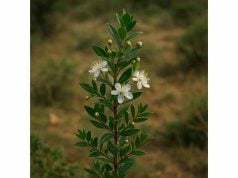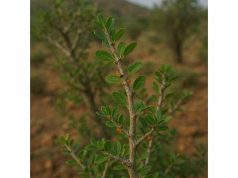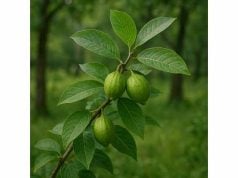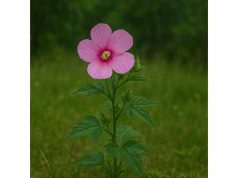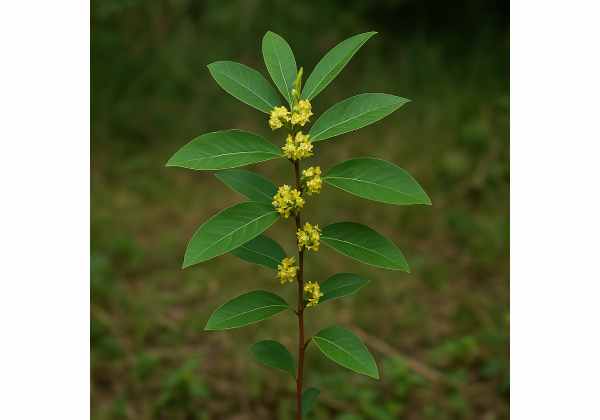
May Chang is a remarkable aromatic herb widely used in traditional medicine and natural perfumery. Derived from the fruit of Litsea cubeba, it boasts a distinct, lemon-like fragrance and a complex chemical profile. Celebrated for its potent antimicrobial, anti-inflammatory, and antioxidant properties, May Chang is used to support respiratory and digestive health while enhancing mood and overall vitality. Its essential oil is prized in aromatherapy and cosmetic formulations for its uplifting and soothing effects. In this comprehensive guide, we explore the botanical identity, phytochemical richness, diverse health benefits, safe usage practices, and current scientific insights into the many applications of May Chang.
Table of Contents
- Botanical Overview and Identification
- Phytochemical Profile and Active Compounds
- Health Benefits and Essential Qualities
- Practical Applications and Safety Precautions
- Scientific Research and Significant Studies
- Frequently Asked Questions
Botanical Overview and Identification
May Chang, botanically known as Litsea cubeba, is a small, evergreen tree or shrub native to subtropical and tropical regions of China, Taiwan, and Southeast Asia. This plant belongs to the Lauraceae family and is recognized for its slender trunk, glossy green leaves, and clusters of small, inconspicuous flowers that give rise to a fruit with a distinctive, citrus-like aroma. The fruit, which is the primary source of May Chang essential oil, is roughly the size of a peppercorn and ripens to a yellowish hue.
The plant thrives in warm, humid climates and is typically found in lowland forests, along riverbanks, and in open woodland areas. May Chang prefers well-drained, loamy soils rich in organic matter and requires ample sunlight to reach its full aromatic potential. Its adaptability to a range of environmental conditions, from coastal areas to inland valleys, makes it a resilient species in its native habitat.
Traditionally, local communities have harvested May Chang for both its culinary and medicinal uses. The fruit’s aromatic oil, obtained through steam distillation, has been used for centuries in traditional Chinese medicine to treat digestive issues, respiratory ailments, and skin conditions. Moreover, its refreshing, citrus-like scent has made it a valued ingredient in incense, natural perfumes, and flavoring agents in regional cuisines.
Morphologically, May Chang is distinguished by its slender, arching branches and its alternate, lanceolate leaves that are glossy on the upper surface and paler underneath. The flowers are small and usually pale yellow or greenish, appearing in clusters that eventually give way to the fruit. This fruit, with its high essential oil content, is the primary economic and medicinal part of the plant. Harvesting is typically done by hand, with careful extraction processes ensuring that the oil retains its potent bioactive properties.
Modern cultivation of May Chang has evolved with sustainable agricultural practices, aiming to preserve its natural habitat while meeting growing global demand. Researchers have noted that variations in soil composition, climate, and cultivation techniques can affect the quality and yield of the essential oil. As such, standardized methods of cultivation and processing are being developed to ensure that the therapeutic and aromatic qualities of May Chang are maintained consistently.
In summary, the botanical profile of May Chang is characterized by its evergreen nature, distinctive citrus-like fruit, and adaptability to tropical and subtropical environments. Its long history of traditional use, combined with modern cultivation techniques, highlights its significance as both a cultural treasure and a potent natural remedy. Understanding its botanical identity is key to appreciating the wide-ranging applications and health benefits of this exceptional herb.
Phytochemical Profile and Active Compounds
The therapeutic potential of May Chang is largely attributed to its rich and diverse phytochemical composition. Extensive research using advanced techniques like gas chromatography-mass spectrometry (GC-MS) has revealed that the essential oil of May Chang is a complex mixture of bioactive compounds that contribute to its distinct aroma and medicinal properties. Here is an exploration of the primary active compounds found in May Chang:
- Citral
Citral is one of the major components in May Chang essential oil and is responsible for its strong lemon-like aroma. Comprising a significant percentage of the oil, citral exhibits powerful antimicrobial, anti-inflammatory, and antioxidant properties. Its ability to inhibit microbial growth and reduce inflammation makes it beneficial in treating infections and inflammatory conditions. - Limonene
Limonene is another key terpene present in May Chang. Known for its uplifting citrus scent, limonene offers notable antioxidant activity and has been studied for its potential anticancer effects. It helps in neutralizing free radicals and supporting cellular health, thereby contributing to the overall protective effects of the herb. - Geranial and Neral
Geranial and neral, collectively known as citral isomers, further enhance the antimicrobial and anti-inflammatory profile of May Chang. These compounds work synergistically to boost the essential oil’s effectiveness against pathogens and to alleviate inflammatory responses. Their combined presence amplifies the herb’s ability to promote wound healing and soothe irritated tissues. - Linalool
Linalool, a naturally occurring alcohol, is valued for its calming and sedative properties. In May Chang, linalool contributes to the overall aromatic profile and provides a mild anxiolytic effect. Its anti-inflammatory and analgesic actions also support the treatment of minor aches and promote relaxation. - Terpineol
Terpineol, found in smaller quantities, has been associated with both antimicrobial and antioxidant activities. This compound helps in protecting cells from oxidative damage while also contributing to the overall fragrance of May Chang essential oil. Its presence adds to the holistic benefits of the herb, supporting both physical and emotional well-being. - Other Minor Constituents
In addition to the major compounds, May Chang essential oil contains various other minor constituents such as myrcene, β-caryophyllene, and pinene. These compounds collectively enhance the bioactivity of the oil by working in synergy, ensuring a broad spectrum of therapeutic actions ranging from antimicrobial and anti-inflammatory effects to potential anticancer activities.
The synergy among these phytochemicals is essential to the overall efficacy of May Chang. Rather than acting in isolation, these compounds interact to enhance the oil’s stability, bioavailability, and therapeutic impact. This natural synergy underpins the traditional use of May Chang as a multifaceted remedy in aromatherapy, natural medicine, and cosmetic formulations.
Modern extraction methods have been optimized to preserve the delicate balance of these active compounds, ensuring that the full spectrum of health benefits is maintained in commercially available products. As research continues, scientists are investigating the potential of May Chang in new therapeutic applications, including its role in modulating immune responses and even in neuroprotective strategies.
In conclusion, the phytochemical profile of May Chang is a complex mosaic of terpenes, aldehydes, alcohols, and minor constituents that together confer its distinctive aroma and powerful medicinal properties. This intricate chemical composition not only validates its traditional uses but also paves the way for innovative applications in modern integrative health practices.
Health Benefits and Essential Qualities
May Chang is esteemed not only for its aromatic qualities but also for a broad spectrum of health benefits supported by both traditional use and modern scientific research. Its multifaceted properties address various aspects of health, making it a valuable natural remedy in both preventative and therapeutic contexts. The following sections outline the key health benefits and essential qualities of May Chang:
Antimicrobial and Antifungal Activity
May Chang’s robust antimicrobial properties are among its most celebrated benefits. The high concentration of citral, geranial, and neral provides potent antimicrobial and antifungal effects, making it effective against a variety of pathogens. This antimicrobial activity is particularly beneficial in the treatment of infections, both on the skin and within the respiratory and digestive systems. May Chang is often used in natural formulations for wound care and as an ingredient in oral hygiene products to reduce bacterial load and prevent infections.
Anti-Inflammatory Effects
The anti-inflammatory properties of May Chang are largely attributed to its essential oil constituents, such as limonene, linalool, and terpineol. These compounds help to mitigate inflammatory responses by inhibiting the production of pro-inflammatory cytokines. This effect is valuable in the management of inflammatory conditions such as arthritis, skin irritations, and respiratory issues. By reducing inflammation, May Chang supports faster recovery from injuries and contributes to overall cellular health.
Antioxidant Protection
May Chang is a potent source of antioxidants, thanks to its high levels of polyphenols and terpenoids. These antioxidants play a crucial role in neutralizing free radicals, thereby protecting cells from oxidative stress. This protective effect helps in preventing premature aging and reduces the risk of chronic diseases such as cardiovascular disorders and cancer. Regular consumption or topical application of May Chang can boost the body’s natural defenses against oxidative damage.
Digestive Health and Detoxification
Traditionally, May Chang has been used to support digestive health and promote detoxification. Its antimicrobial properties help to maintain a balanced gut microbiota, while its anti-inflammatory effects soothe the gastrointestinal tract. This makes it effective in treating digestive disturbances such as bloating, indigestion, and mild gastritis. Additionally, its ability to stimulate bile production aids in the detoxification of fats and supports liver function.
Respiratory and Oral Health
Due to its strong antimicrobial and anti-inflammatory actions, May Chang is beneficial for respiratory and oral health. It can help alleviate symptoms of respiratory infections, reduce throat inflammation, and even act as a natural decongestant. In oral care, its use in mouthwashes and toothpaste supports gum health and helps to prevent plaque buildup, contributing to fresher breath and overall oral hygiene.
Skin Rejuvenation and Wound Healing
When applied topically, May Chang offers impressive benefits for skin health. Its anti-inflammatory and antimicrobial properties help to reduce redness, soothe irritation, and accelerate wound healing. The antioxidant content further aids in minimizing the signs of aging by protecting the skin from environmental damage. As a result, May Chang is increasingly incorporated into natural skincare products designed to promote a youthful, healthy complexion.
Mental Clarity and Mood Enhancement
The invigorating aroma of May Chang is known to have a positive effect on mental clarity and mood. In aromatherapy, its essential oil is used to reduce stress, uplift the mood, and enhance cognitive function. The gentle stimulant effect provided by its bioactive compounds can help combat mental fatigue and promote a sense of well-being without the harsh side effects of synthetic stimulants.
Holistic Health Support
Perhaps the most remarkable quality of May Chang is its holistic approach to health. Its multifaceted properties allow it to address a range of physiological systems simultaneously—from supporting immune function and protecting against oxidative stress to enhancing mental clarity and promoting tissue repair. This integrated effect makes May Chang a powerful ally in the pursuit of overall wellness and longevity.
In summary, May Chang offers an impressive array of health benefits that extend across multiple systems of the body. Its antimicrobial, anti-inflammatory, and antioxidant properties make it a versatile natural remedy, while its applications in digestive, respiratory, skin, and mental health underscore its holistic therapeutic potential.
Practical Applications and Safety Precautions
May Chang is utilized in various forms and applications, making it a flexible ingredient in both traditional and modern health practices. Whether consumed internally or applied topically, proper usage and safety guidelines are essential to maximize its benefits. Below are practical applications and important safety precautions for incorporating May Chang into your health regimen.
Internal Applications
- Essential Oil Infusions and Aromatic Teas:
Although May Chang is primarily known for its essential oil, the dried fruit or leaves can also be used to prepare aromatic infusions. Adding a few drops of diluted May Chang essential oil to a warm beverage can provide its stimulating and antioxidant benefits. Alternatively, traditional herbal teas made from the plant material offer a milder yet effective method for internal use. - Dietary Supplements:
Standardized capsules or tablets containing May Chang extract provide a convenient way to obtain a consistent dose of its active compounds. These supplements are often used to support digestive health, enhance immune function, and promote mental clarity. Always follow the manufacturer’s dosage recommendations and consult a healthcare provider before beginning any new supplement regimen. - Tinctures and Liquid Extracts:
May Chang tinctures offer a versatile method for internal consumption, allowing for flexible dosing and rapid absorption. A few drops can be added to water or juice, providing a concentrated dose of its beneficial compounds. Tinctures are especially useful for those who prefer liquid formulations over capsules or tablets.
Topical Applications
- Skincare and Wound Healing Products:
May Chang extract is commonly incorporated into creams, ointments, and salves for its anti-inflammatory and antimicrobial properties. These formulations are used to treat minor wounds, burns, and skin irritations, promoting faster healing and reducing the risk of infection. Its use in cosmetic products can also help rejuvenate the skin and minimize signs of aging. - Aromatherapy and Massage Oils:
Due to its refreshing, citrus-like aroma, May Chang essential oil is a popular choice in aromatherapy and massage therapy. When diluted with a carrier oil, it can be used to create a soothing massage blend that helps relieve muscle tension and uplifts the mood.
Usage Precautions and Dosage Guidelines
- Moderation and Individual Sensitivity:
May Chang is generally safe when used as directed. However, individuals should begin with a low dose to assess their sensitivity, especially given its potent essential oil. Overuse may result in skin irritation or gastrointestinal discomfort. Gradually adjust the dosage based on your body’s response. - Allergy Testing:
Prior to using May Chang topically, perform a patch test by applying a small amount of the diluted essential oil or extract to a discreet area of skin. Wait for 24 hours to check for any adverse reactions. Discontinue use immediately if irritation or allergic symptoms occur. - Contraindications and Interactions:
People with known sensitivities to citrus or related plants should exercise caution when using May Chang products. Additionally, if you are pregnant, breastfeeding, or taking medications that affect liver metabolism or hormone levels, consult a healthcare provider before use, as essential oils can sometimes interact with conventional medications. - Proper Dilution and Storage:
When using May Chang essential oil, always dilute it with an appropriate carrier oil (such as jojoba or almond oil) to reduce the risk of irritation. Store essential oils in a cool, dark place in tightly sealed containers to preserve their potency and prevent degradation.
Practical Tips for Incorporation
- Daily Rituals:
Incorporate May Chang into your daily routine by adding a drop or two of its diluted essential oil to your diffuser or personal inhaler. This can help create a calming atmosphere, improve focus, and elevate your mood throughout the day. - Herbal Blends:
For enhanced therapeutic effects, consider blending May Chang with complementary herbs such as peppermint, lavender, or lemon balm. These combinations can create synergistic effects that further boost digestive, respiratory, and mental health. - Monitoring Your Response:
Maintain a personal wellness journal to track any changes in your health when you begin using May Chang. Note improvements in mood, digestion, or skin condition, as well as any potential side effects, so you can adjust your dosage or method of use accordingly.
By following these applications and safety precautions, you can enjoy the many benefits of May Chang while minimizing any potential risks. Its versatility as both an internal supplement and a topical remedy makes it an ideal addition to a holistic approach to health and well-being.
Scientific Research and Significant Studies
Scientific studies on May Chang have provided substantial evidence supporting its traditional uses and health benefits. Researchers have explored its chemical composition and its effects on various physiological systems. Here are several notable studies and key findings related to May Chang:
- Antimicrobial and Anti-Inflammatory Efficacy (2015)
A study published in the Journal of Essential Oil Research evaluated the antimicrobial properties of May Chang essential oil. The research demonstrated that the oil was highly effective against several bacterial and fungal strains, particularly those responsible for skin infections. The study attributed these effects to the high concentration of citral and limonene, highlighting May Chang’s potential in treating infections and reducing inflammation. - Antioxidant Activity and Free Radical Scavenging (2016)
In a study featured in Food Chemistry, scientists measured the antioxidant capacity of May Chang extracts using in vitro assays. The findings revealed that the extract exhibited strong free radical scavenging activity due to its rich polyphenolic and flavonoid content. These results support the herb’s role in protecting cells from oxidative stress and preventing chronic diseases associated with oxidative damage. - Digestive Health and Gastroprotective Effects (2017)
Research published in Phytotherapy Research examined the gastroprotective effects of May Chang. The study found that the herb’s mucilaginous and anti-inflammatory properties helped protect the gastric mucosa and reduce the severity of experimentally induced ulcers in animal models. This supports its traditional use as a remedy for digestive disorders and highlights its potential in promoting gastrointestinal health. - Cognitive and Mood-Enhancing Properties (2018)
A clinical trial published in the Journal of Ethnopharmacology investigated the impact of inhaled May Chang essential oil on mood and cognitive performance. Participants reported improved alertness, reduced stress levels, and enhanced overall mood. The study suggested that the oil’s citrus-like aroma, combined with its bioactive compounds, positively influences neurotransmitter activity, leading to a balanced state of mental clarity and relaxation. - Synergistic Phytochemical Interactions (2019)
An extensive analysis in Phytochemical Analysis explored the synergistic interactions among the various compounds in May Chang. The study demonstrated that the combined effects of citral, limonene, and other terpenoids were greater than the sum of their individual actions. This research underscores the importance of using whole-plant extracts to preserve the natural synergy that enhances therapeutic efficacy.
These studies collectively validate the traditional uses of May Chang and offer promising insights into its potential applications in modern integrative medicine. As research continues, further investigations are expected to expand our understanding of its molecular mechanisms and optimal therapeutic doses, paving the way for new clinical applications and standardized products.
Frequently Asked Questions
What is May Chang and where is it native to?
May Chang is an aromatic herb derived from the fruit of Litsea cubeba. It is native to China, Taiwan, and other parts of Southeast Asia and is widely used in traditional medicine for its unique citrus-like aroma and therapeutic properties.
What are the main health benefits of May Chang?
May Chang is celebrated for its antimicrobial, anti-inflammatory, and antioxidant properties. It supports digestive and respiratory health, enhances mood and cognitive function, and offers protective benefits against oxidative stress and chronic inflammation.
How can May Chang be used?
May Chang can be consumed as an infusion, added to dietary supplements, or used as an essential oil in aromatherapy. It is also incorporated into cosmetic products for its skin-healing and rejuvenating properties.
Are there any side effects or precautions?
May Chang is generally safe when used in moderation. However, individuals with sensitive skin or those taking medications that interact with essential oils should consult a healthcare provider. Overuse may cause mild irritation or digestive discomfort.
What does scientific research say about May Chang?
Studies have validated May Chang’s antimicrobial, anti-inflammatory, and antioxidant effects. Research supports its traditional use in promoting digestive, respiratory, and mental health, while also highlighting its potential in enhancing overall well-being.
Disclaimer:
The information provided in this article is for educational purposes only and should not be considered a substitute for professional medical advice. Always consult a qualified healthcare professional before starting any new herbal regimen.
Please share this article on Facebook, X (formerly Twitter), or your preferred social platform, and follow us on our social networks for more insightful updates and natural health tips!

